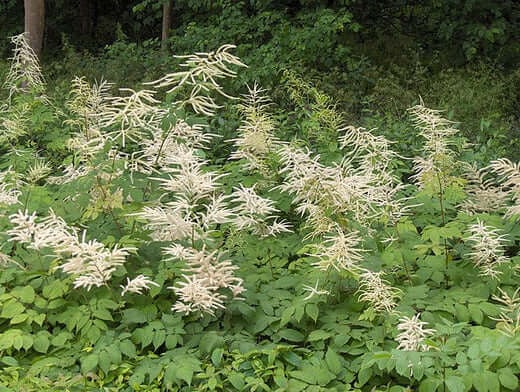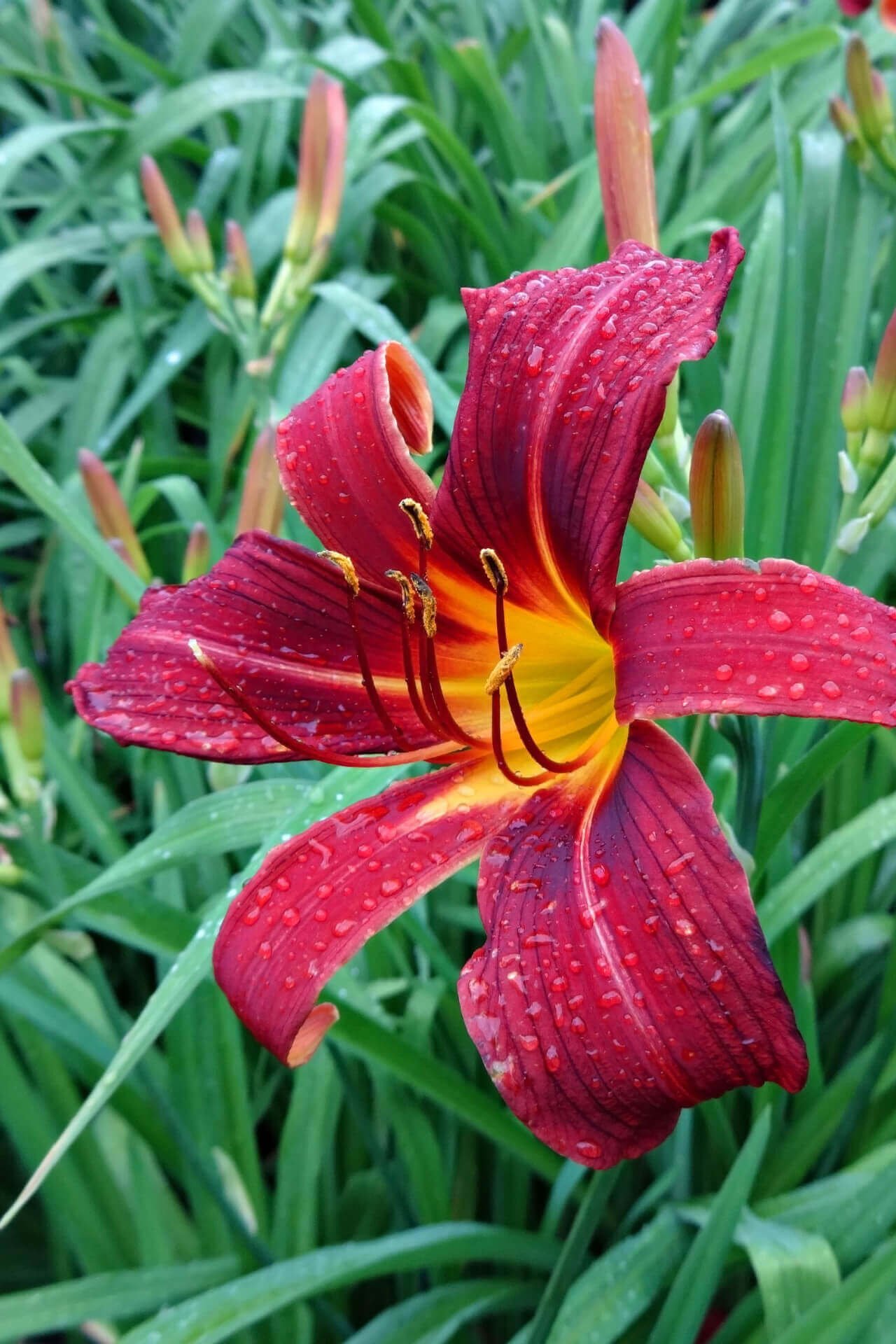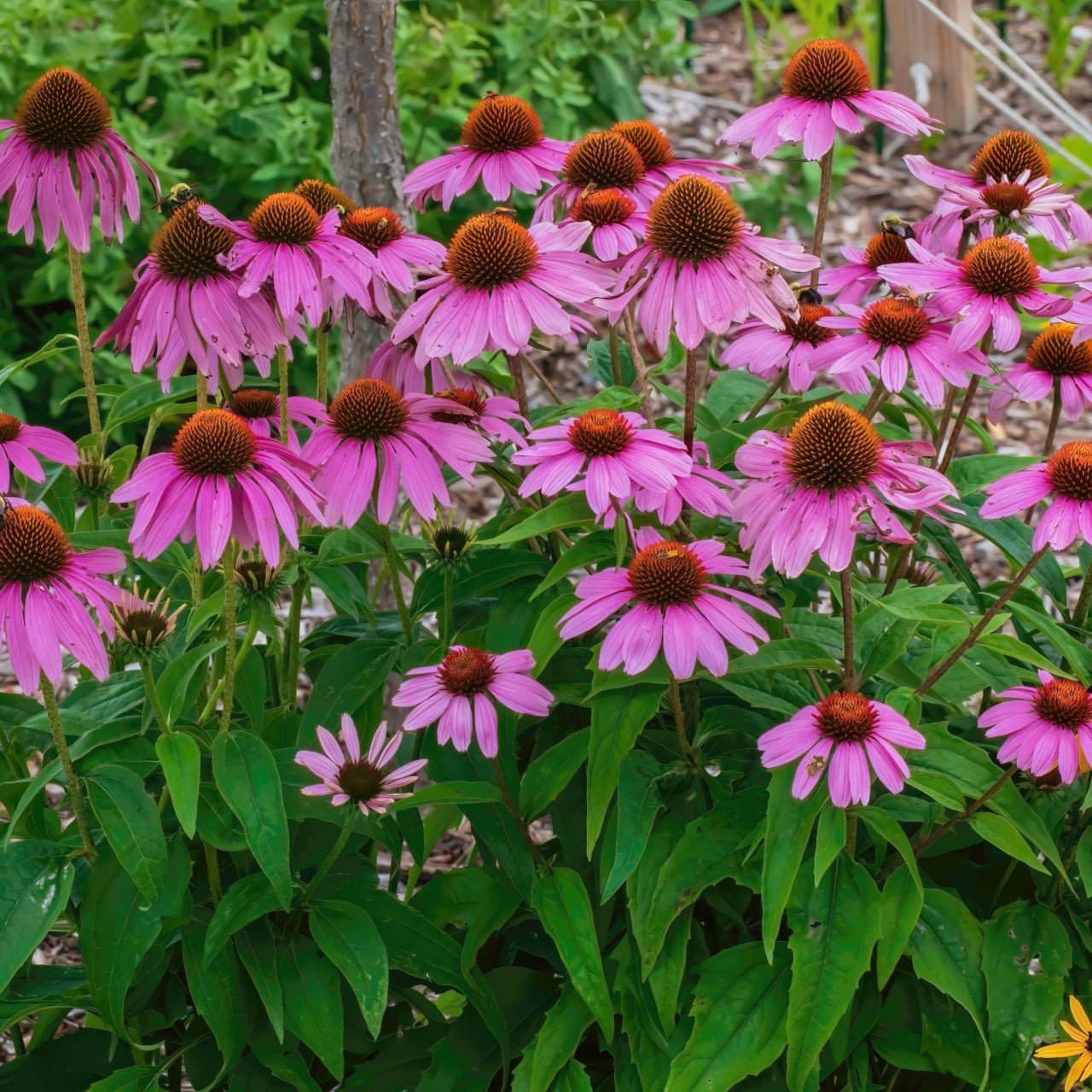Clay Soils are Common in The US
Clay soil is widespread in many parts of the US. It is often the result of the evaporation of lakes or glaciers that covered an area thousands of years ago. Clay soil can be wet and sticky or dry and heavy. The soil sticks together in hard clumps and needs to allow for good drainage. This kind of soil can be very challenging for a gardener.
How to Work with Clay Soil in Your Garden
There are ways to deal with clay soil, the first of which is soil additions. Supplements like composted manure, composted leaves, peat moss, humus, used coffee grounds, and wood ash can be added by digging or breaking up the soil into smaller pieces using a shovel or pitchfork. But this is often a temporary solution and must be repeated yearly. Another approach to working with garden clay soil is choosing plants that tolerate this soil. Luckily, several reliable perennials will grow and thrive in clay soils.
Most perennials do best if they are divided every 3-4 years or more often. Dividing perennials in clay soil may be more labor-intensive than in softer soils, so keep perennial clumps manageable. This is especially important with perennials with large stringy root systems, such as hostas.
Best Perennial Plants For Clay Soil
Daylilies (Hemerocallis)
They are easy to grow and provide weeks of beauty throughout the summer. Some of them bloom early and then rebloom in autumn. The native orange day lily (commonly called “ditch lily”) can be somewhat invasive in the garden but is also an excellent plant to fill in a large area quickly, such as a long driveway edge or alongside a ditch. It can be recognized by its early flowering, very tall stems, and pale orange flower with a yellow eye edged in red. Species and hybrid daylilies are easier to control and come in various colors and sizes. True to their name, each flower lasts about a day, so keep the plants deadheaded for a neat look. Daylilies like a fair amount of water. They help crowd out other weeds due to their thick root systems. Once they are done flowering, you can shear the foliage back to the ground, and it will grow back a tidy clump to finish the season. Some colorful varieties to try: ‘Janice Brown’ (pale pink with rosy pink center, reblooming), ‘Rocket City’ (bright golden orange), ‘’Catherine Woodbury’ (pale pink and white with a bright yellow eye), Moonlit Masquerade’ (pale yellow petals with a deep violet center), ‘Joan Senior’ (creamy white with a pale yellow eye, reblooming), and ‘Bela Lugosi’ (deep purple with a greenish yellow eye).
Astilbe
These popular shade perennials have delicate lacy leaves and fluffy plumes of tiny flowers. They spread via small rhizomes. The clumps can get quite large over time, so dividing them every 3-4 years is best once established. They come in various colors and sizes, adding brightness to shady areas with their delicate blooms. Some suitable varieties to try include: ‘Deutschland’ (long delicate white flower plumes), ‘Maggie Daley’ (thick plumes of lilac-pink flowers), ‘Red Sentinel’ (delicate dark red flowers and dark green leaves), ‘Ostrich Plume’ (pale pink flowers that grow on stems that curve and droop, unlike most astilbes which have straight stems), and ‘Amethyst’ (tall stems of pale lavender flowers).
Stonecrop (Sedum)
Sedums, a hardy sun-loving perennial, can be grown in various soil conditions. They come in multiple shapes and sizes, from creeping varieties to clumping plants whose flowering stems grow up to 3 feet tall. Sedums have fleshy roots that are easy to divide, and unlike many plants, they can be gently separated and moved at any time in their growing season. The foliage and flowers come in various colors, from pale silvery green to deep burgundy. These plants put up tiny green rosettes in spring and then put on a show all season long. One of the most popular varieties is ‘Autumn Joy,’ which has rosy-pink flowers that shift to reddish bronze and burgundy from summer to fall. You can leave the flower stems intact through winter to create pleasing shapes in your snowy garden. Other varieties to try: ‘Matrona’ (tall, sturdy plants with reddish stems and pale pink flowers), ‘Neon’ (bright, vivid pink blooms),
These long-blooming daisy-like perennials attract pollinators and birds. They like a sunny location. Native echinacea comes in shades of pink and greenish white with orange cone-shaped centers, while newer hybrids come in various colors. You can deadhead the flowers when they fade, but songbirds will appreciate it if you leave them intact so they can snack on the seeds. Some varieties to enjoy: ‘Tiki Torch’ (tall plants with bright orange flowers and dark red cones), ‘Double Decker’ (pink petals with brown cones and a cluster of pink petals emerging from the top of the cones) ‘Cantaloupe’ (pale orange outer petals and fluffy inner petals surrounding orange cone), ‘Cheyenne Spirit’ (range of colors from yellow to red with dark brown cones).
Aster
These well-known perennials grow wild in meadow gardens and along roadsides. You can purchase wide varieties to grow in your garden, ranging from 10 inches to 4 feet tall. Some taller ones include ‘Crimson Brocade’ (24 inches tall, crimson red flowers with yellow centers) and ‘Honeysong’ (3 feet tall, pink flowers that attract pollinators). ‘Woods Blue’ is a shorter sprawling aster (12 inches high) with vibrant pale blue flowers with yellow centers; this variety also has pink and purple versions.
Bearded Iris (Iris germanica)
The iris is named for the Roman goddess of the rainbow and comes in a dizzying array of colors and color combinations. Bearded irises (the “beard” is the fuzzy part at the flower’s center) are low-maintenance and vigorous growers and not fussy about soil. The good part of the flower is the “standard,” while the lower petals are called “falls.” Planting irises is essential so that part of the rhizome remains exposed above the soil surface. They can be easily divided by digging them up and trimming off parts of the rhizome that don’t have roots. Many hardy heirlooms with multiple colors (like ‘Quaker Lady,’ which has buff-colored standards, pale violet falls, and bright yellow beards) tend to multiply more quickly than the larger ones, frillier hybrids of recent years. Other well-loved varieties include ‘Perfection’ (pale blue-violet standards with deep purple fall and white
beards), ‘Schiaparelli’ (pale pink standards and falls with orange beards), ‘Princess Caroline of Monaco’ (pale blue standards and falls with orange beards), and ‘Plumeri’ (rosy pink standards, lavender falls, and yellow beards).
Bee Balm (Monarda)
These long-blooming perennials need full sun to thrive but are not fussy about soil. They tend to spread, but their shallow roots make them easy to divide and control. Bee balm attracts honeybees, butterflies, moths, hummingbirds, and other pollinators. The older heirlooms (like the magenta ‘Raspberry Wine’ and bright red ‘Cambridge Scarlet’) grow about 2-3 feet tall, but there are many newer hybrid dwarf plants that are more compact. Newer varieties include ‘Petite Delight’ (12 inches tall with bushy form and rose-pink flowers) and ‘Fireball’ (deep green leaves with dark red flowers).
Clay Soil Is A Surprising Boon for Perennials
Many people mistakenly think clay soil is too heavy to handle and often leads to waterlogging problems. The soil, which causes frustration for many gardeners, is an optimal growing condition for numerous perennial plants. The hard-to-work consistency of clay is offset by its beneficial structural qualities, which, along with its high nutrient content and ability to retain water, enable deep-rooted plants and those with fibrous root systems to flourish.
Clay soil stands out for its powerful moisture retention capability. The clay soil particles bond tightly to each other, which slows down water drainage so that perennial plant roots always find moisture even in drought conditions. Retaining water helps minimize plant stress during periods between watering and rainfall. Developing roots benefit from clay soil's water-retentive qualities, which provide consistent hydration while careful management prevents oversaturation.
Clay soil retains water effectively and is an excellent storehouse for essential nutrients. The CEC of clay particles enables them to attract and hold onto positively charged nutrients, including potassium, magnesium, and calcium. Healthy root growth and vigorous stems and foliage require these specific elements. Clay soil retains nutrients effectively, which enables perennials to access sustained supplies of essential growth elements throughout the years.
The pH level in clay soil is naturally higher than in sandy or loamy soils. The inherent alkalinity of clay soil benefits perennials that thrive in conditions that range from neutral to slightly alkaline, even though regional factors like rock or soil composition affect the exact pH levels. The natural richness of clay works together with this property to help develop strong root systems that survive temperature and moisture changes.
The beneficial environment clay soil creates for perennials is based on its distinctive structural properties. The ability of clay to form tightly packed structures may appear disadvantageous initially. Organic matter breaks dense clay clumps into smaller aggregates, which provide necessary air and water pockets. Gradually adding compost and leaf mold, among other organic materials, clay transforms into friable soil, providing enough room for perennial roots to extend their reach. Combining compact mineral particles with organic materials produces a secure environment that enables plants to establish strong roots.
The natural density of clay soil helps shield perennial roots from extreme temperature changes. Clay's ability to hold warmth and moisture creates an insulating barrier around roots, allowing perennials to survive cold winters and hot summers. Clay soil mitigates temperature variations, protecting sensitive root systems from harmful fluctuations.
Some people find clay soil challenging to handle, but these difficulties lead to its beneficial properties. With appropriate care and organic enrichments, clay soil becomes a supportive habitat with plenty of water and essential nutrients for perennial plants. By investing in correct soil amendments and cultivation methods, gardeners can turn clay soil into an excellent base for a thriving display of perennial plants.
Read more

The goat's beard plant is a dramatic plant with soft plumes of white flowers. It can grow in most areas of the US and thrives in moist conditions. In this article, we will share how to successfully...

Gorgeous blooms of flowers aren't only exclusive to Spring. Numerous species of trees thrive with our weather, and they produce stunning blooms all year long. Here are ten beautiful flowers which w...




